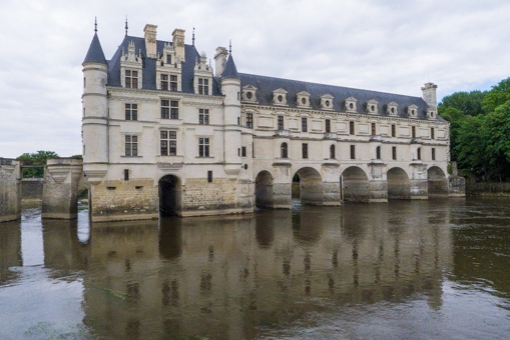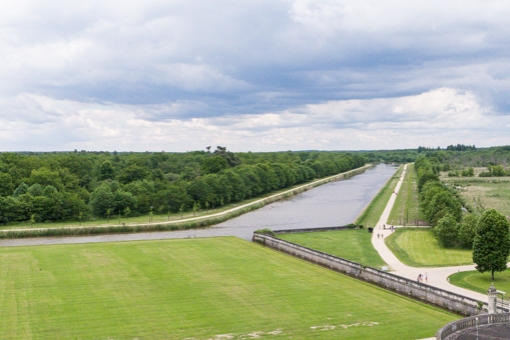If you have been following our trip to the Val de Loire, and our story about finding the chateau we booked (click here to read), this is the second place where we ended up. Because we cannot extend our unplanned stay at Chateau des Arpentis (click here to see it), the owner, Sylvie offered us a room at her other property in Vouvray,
Domaine des Bidaudieres is a restored 19th century property located on a terrace of a vineyard. The 15-hectare is no longer producing wine. The web site has many more pictures.
We liked the spaciousness of the entrance hall. When we arrived, a couple of potted small lemon trees with ripe fruits perfumed the glass-enclosed space making it very inviting and relaxing.
Sylvie told us that this property is very popular for weddings and are booked every weekend in the summer. We can see that the entrance hall is really good for a reception or dining area.

The property has a swimming pool on a lower terrace and an interesting stone staircase.
A photogenic spot for weddings.
There is an orangery next to the pool which can also be used as a residence with a glass-roofed sitting area.
This is one of my favorite spot. I(Chris) can imagine having a nice dinner al fresco … watching sunset from the terrace at dusk and then later with candles on the chandelier suspended from the tree …
.
We did not have time to explore the grounds of the property.
The rooms, each named after one of the Vouvray vineyards, have a view over the pond and the grounds of the estate on one side and over the swimming pool terrace and the surrounding countryside on the other.
Our window has a view of the pond. The water was so clear that we could see the vegetation on the bottom from where we stood on the second floor.
Sylvie lives here with her family in a separate area.
Common room
Vouvray is located along the Loire on the east of Tours. It is very well known for still and sparkling white wine made with the Chenin Blanc grape.
Sylvie recommended checking out the cave of Domaine Marc Bredif. We did not have time to tour the cave but bought several bottles to take home and a magnum of the sparkling variety for VC’s birthday party. It was a really good drink for the summer.
Another place to come back to next summer.






























































































































 .
.













































